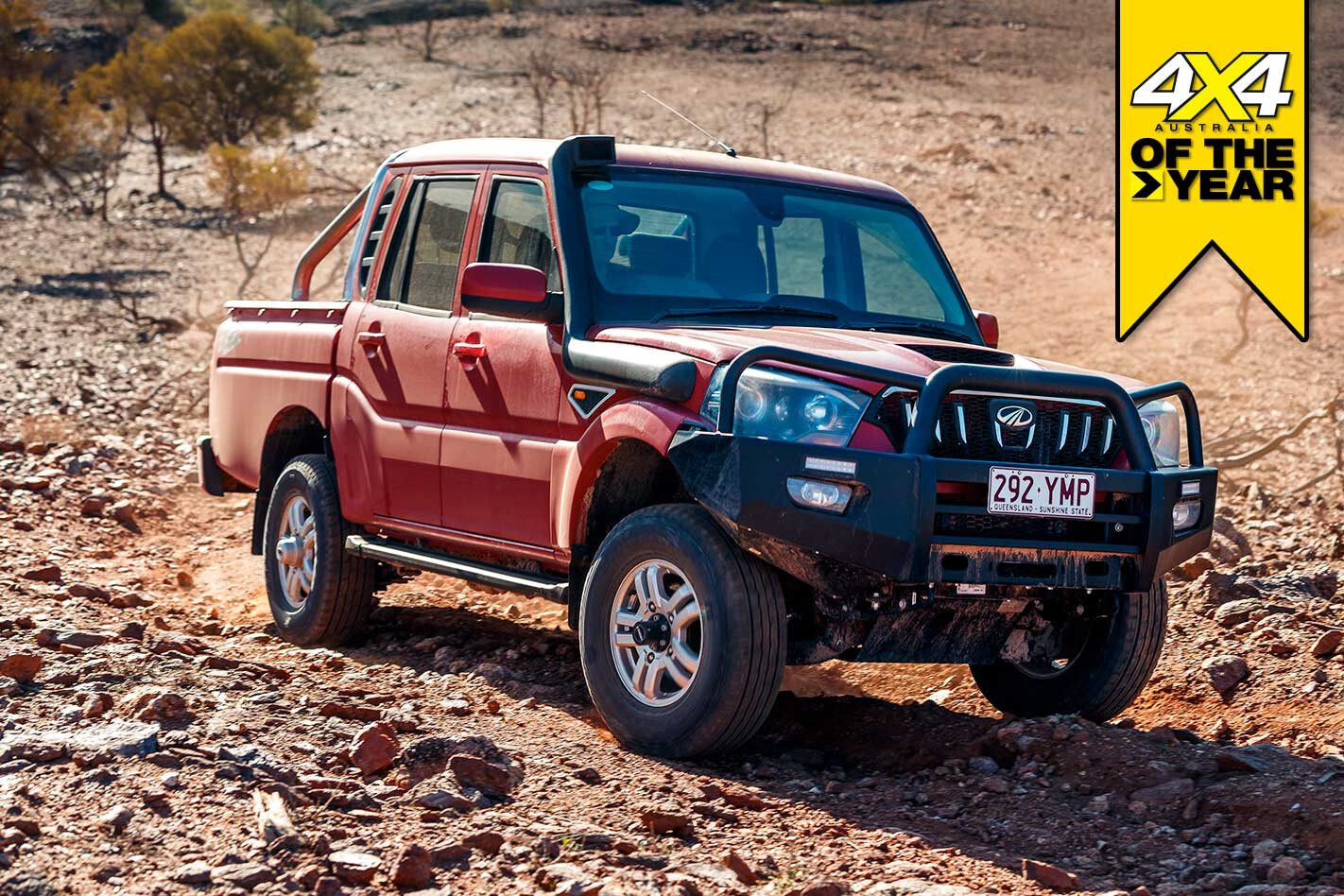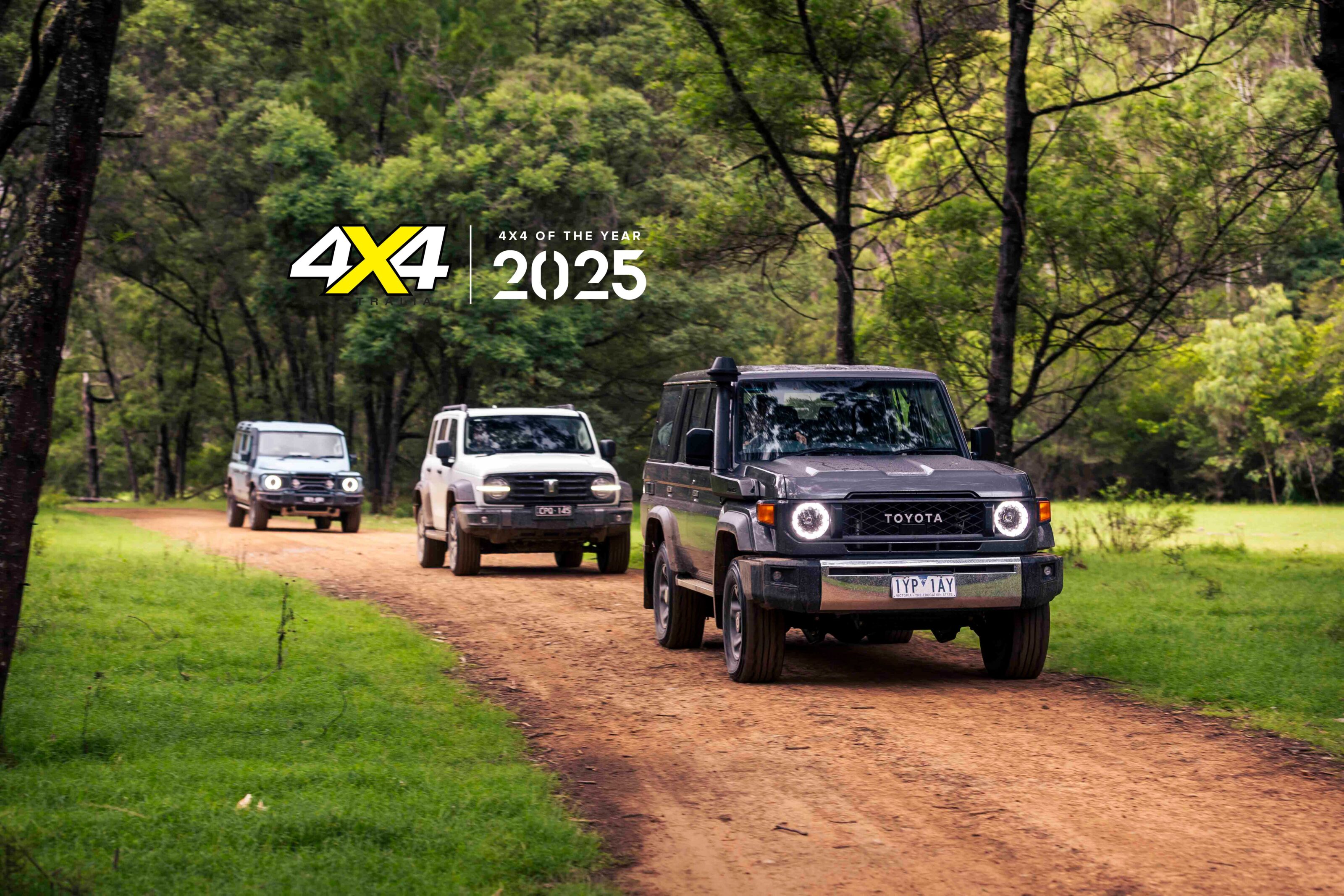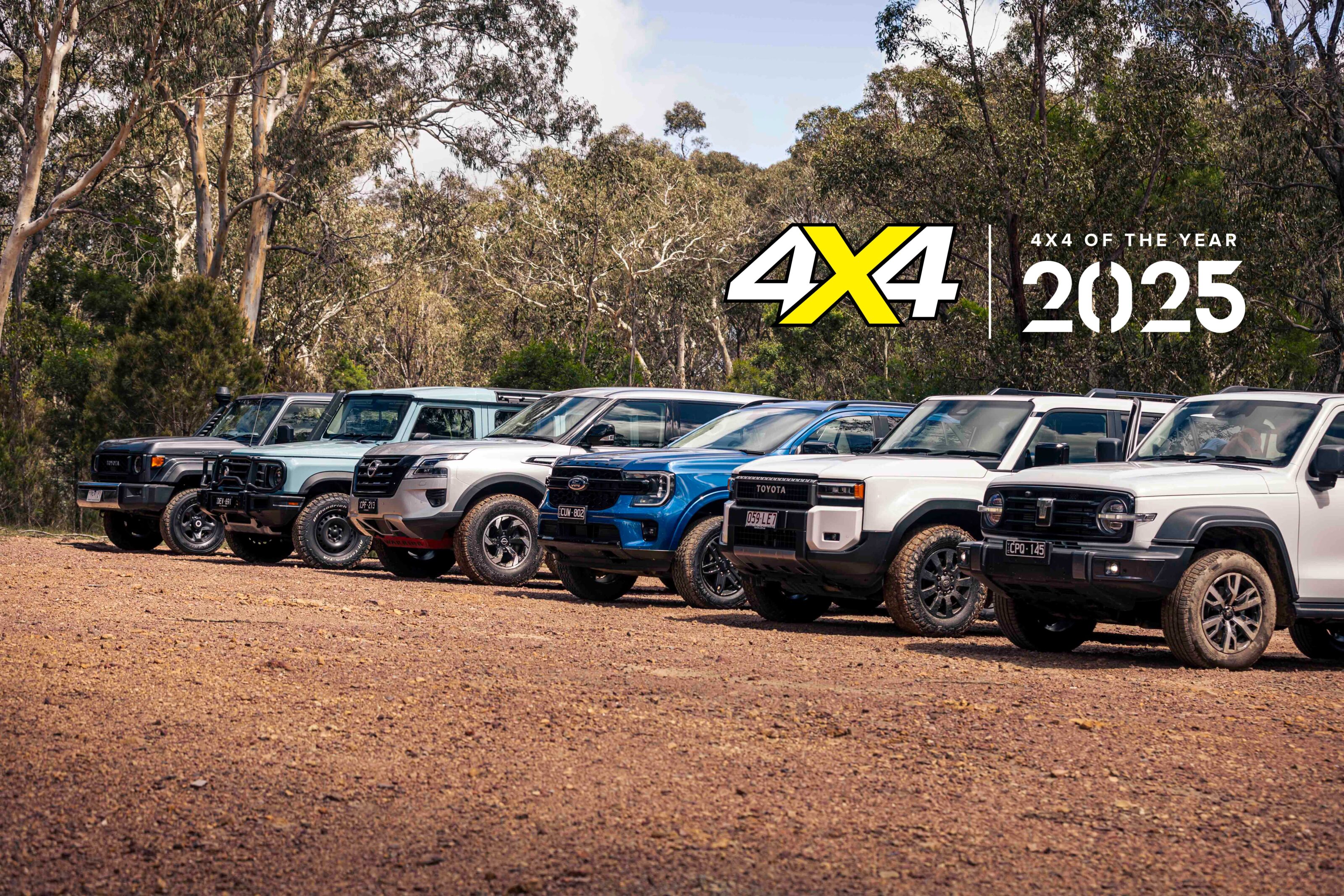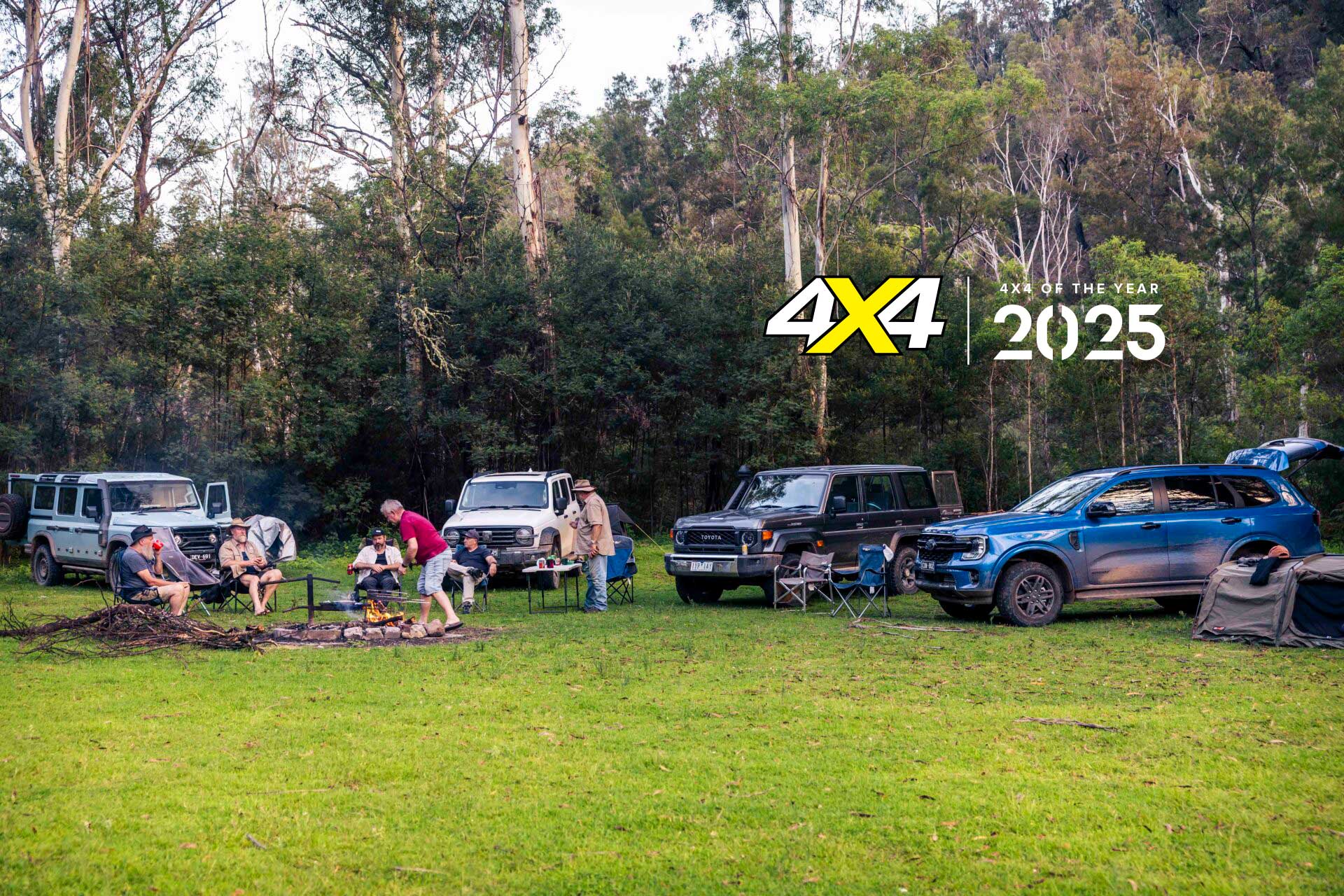If you’re wondering what a Mahindra is doing at 4X4OTY you may be surprised to hear it has a good deal of old-school ‘4×4’ in its DNA. Mahindra started in the automotive business by assembling war-surplus Jeeps under licence from Willys Overland in the late 1940s and has been building Jeep CJ lookalikes ever since.
Mahindra ‘CJs’ were first sold in Australia in 1990, while the first Pik-Up, the forebear of what we have here, arrived in 2007. Between now and then there’s been a few changes (most notably a new 2.2L engine in 2011), but this latest Pik-Up is very much a top-to-bottom rebirth that brings new cabin fit-out, a six-speed manual gearbox (replacing the previous five-speed), the now mandatory electronic stability control, and detail changes to the engine, body and chassis in the interests of ride, handling and improved NVH.
Touring
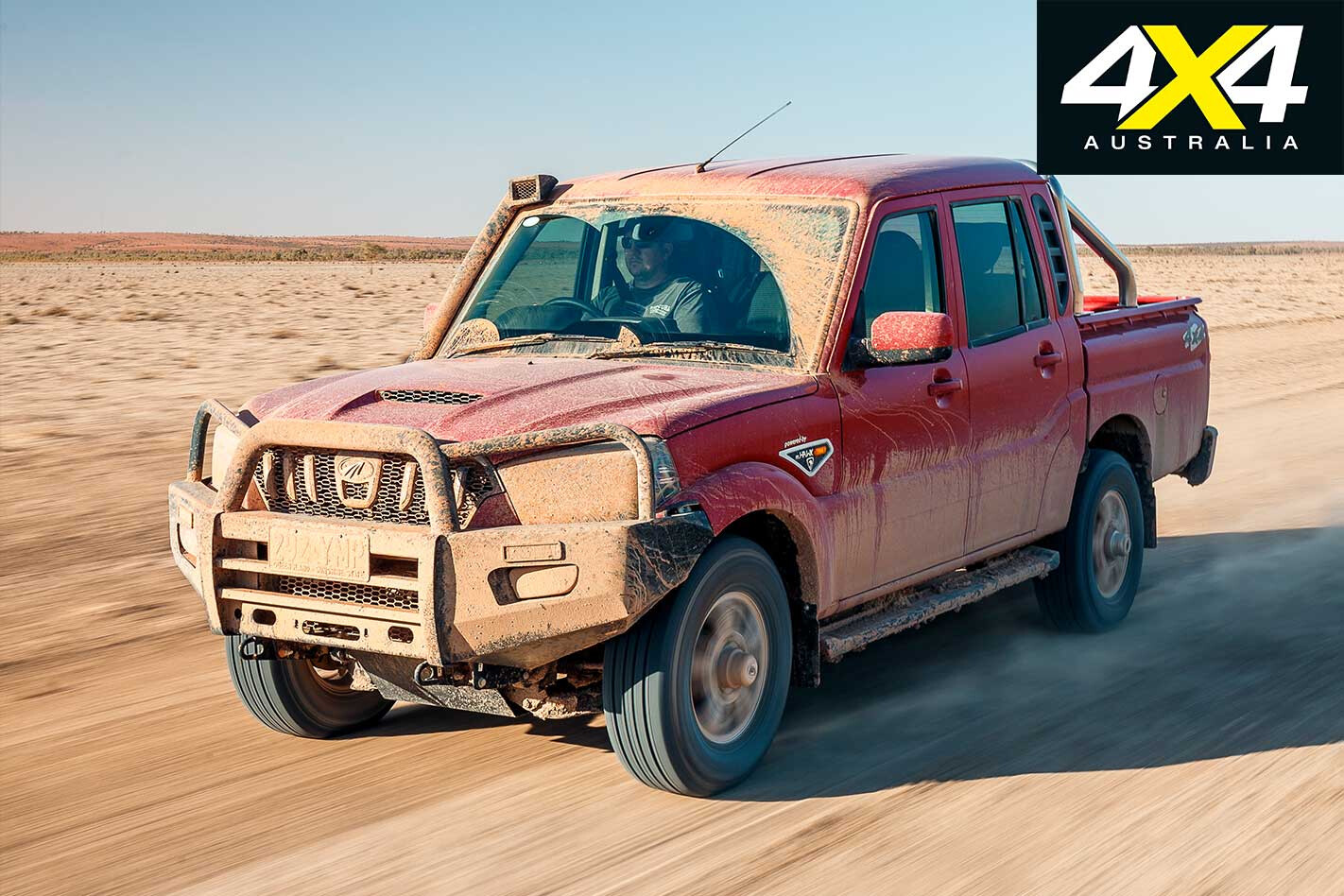
On paper the Pik-Up’s 103kW and 330Nm from its 2.2-litre diesel doesn’t look too promising given the Pik-Up weighs more than 2000kg unladen and has upright light-truck-style body whose design would appear to owe little to aerodynamic efficiency.
Thankfully, that on-paper impression doesn’t play out on the highway and the Pik-Up generally gets along without fuss, even if its highway overtaking performance is far from snappy. Relatively short gearing from the six-speed manual helps the engine flatten the hills, yet at the same time the engine doesn’t feel overly busy at highway speeds thanks to its surprising level of refinement.
The Pik-Up may be the least expensive vehicle here, but its engine is far from the least refined. Proof of the engine’s impressive performance also comes with its fuel use. Despite its compromised aerodynamics and the fact you often have to push it hard to keep up with the seven other more powerful vehicles, it still wasn’t the heaviest on fuel by a good margin.
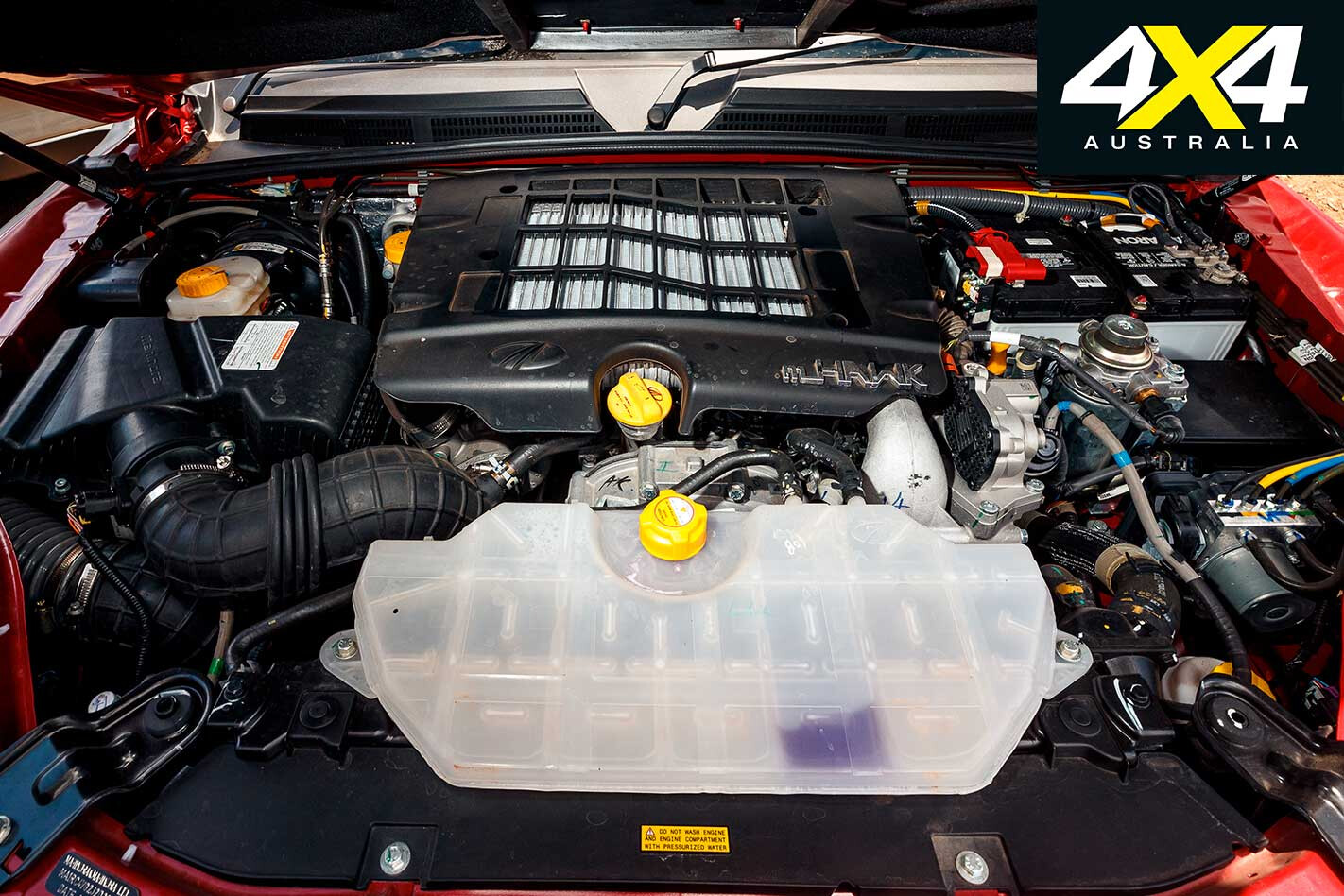
The chassis didn’t do anything wrong either, even if the unladen ride can be hard and sometimes bouncy on bumpy roads. Still, that’s to be expected, as previous maximum payload testing has shown the Pik-Up’s chassis is happy to carry its substantial payload; so a supple unladen ride is a big ask. The road and wind noise at highway speeds isn’t bad, either.
Trail Driving
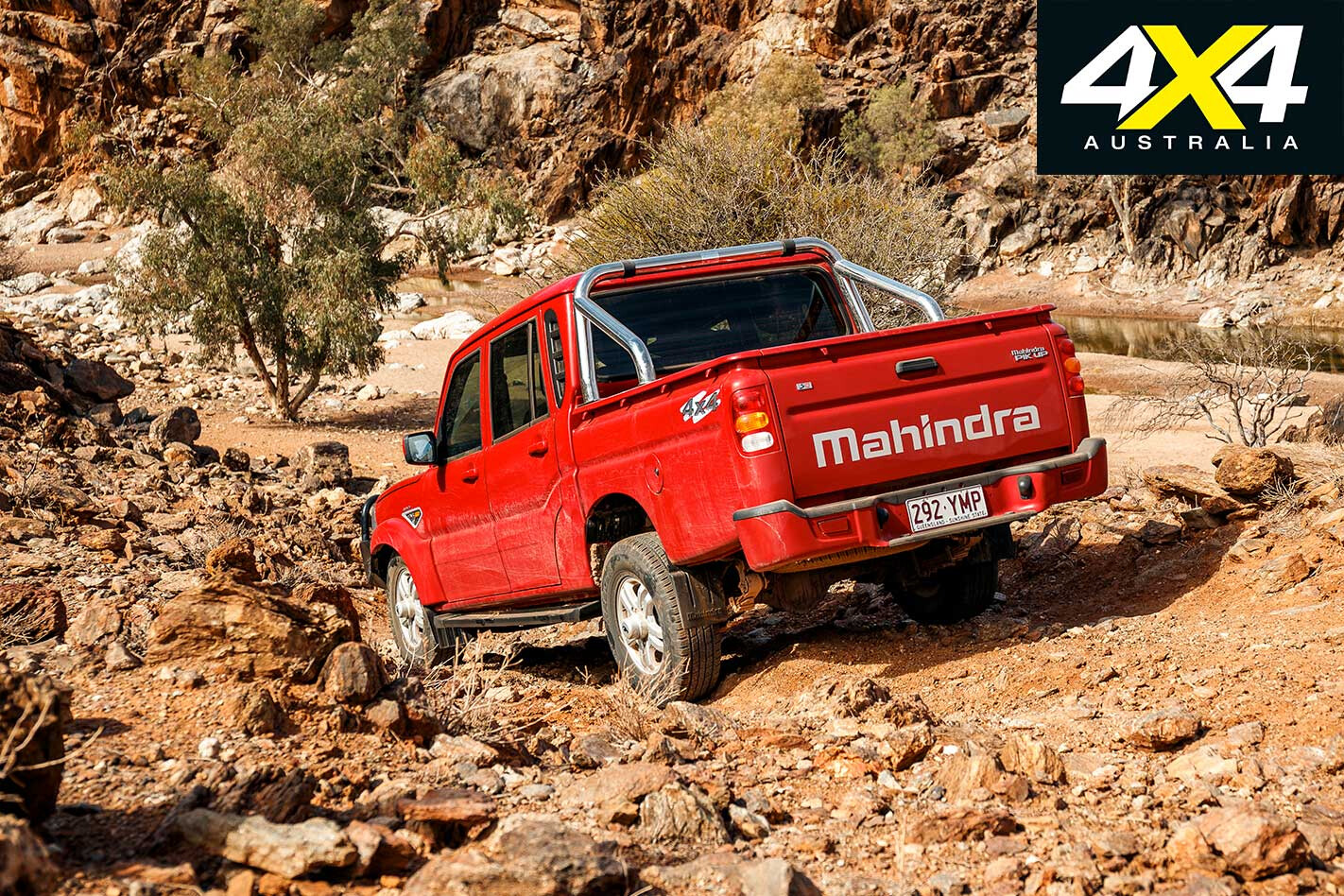
If the Pik-Up felt better than expected on the highway it really came into its own on the variety of off-road tracks we tackled. Most noticeably in this company the upright driving position provided the best vision and the ability to easily place the Pik-Up on the track exactly where you wanted.
If you did miss seeing something nasty the Pik-Up’s reasonable ground clearance, robust underpinnings and old-school tall and narrow tyres on 16-inch rims engendered a degree of confidence lacking in many of the others.
The part-time dual-range 4×4 system – operated via a big rotary dial on the centre console and using a BorgWarner transfer case – works well and without delay and provides reasonable low-range reduction. The positive clutch take-up, well-calibrated throttle, good off-idle response and general engine flexibility (maximum torque from 1600rpm) are also off-road positives.
Set-Piece Hill Climb
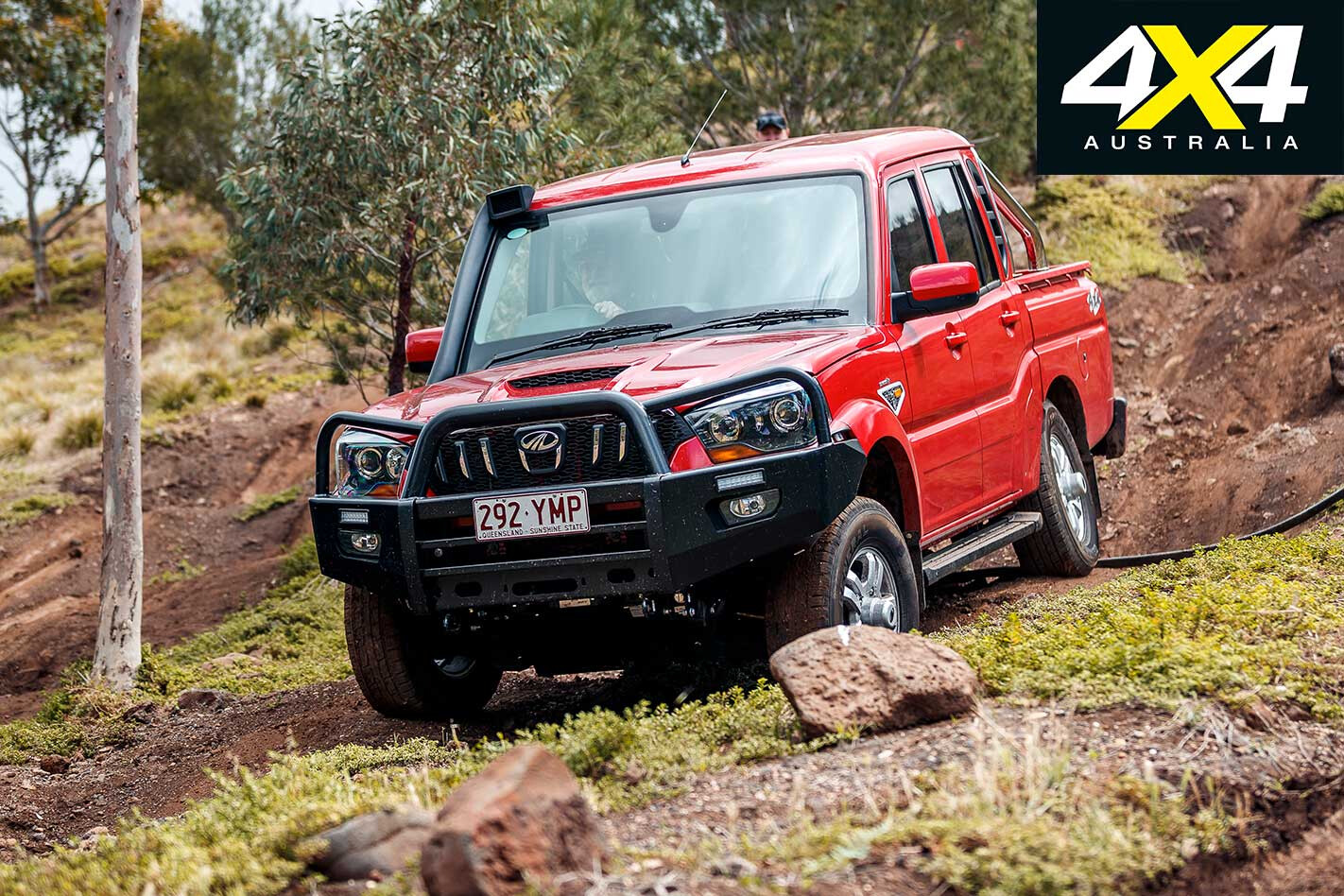
Our set-piece hill climb is not only very steep but has deep holes that are primarily designed to test – to the max – the suspension travel and the subsequent effectiveness of what traction aids a vehicle possesses. It’s also a telling test of gearing.
The Pik-Up has reasonable travel from its rear live axle but isn’t blessed with a great deal of travel from its torsion-bar, independently sprung front end. However, the Pik-Up does have an Eaton self-engaging (mechanical) locker in the rear axle and, helping things further, the electronic traction control stays active on the front axle even when the Eaton is locked.
The end result is that the Pik-Up managed to clear the set-piece climb; although, in a rather dramatic fashion, with lots of wheel lifting and body movement due to the limited front travel. Lower gearing would be handy for both the climb and descent.
Cabin, Equipment and Safety
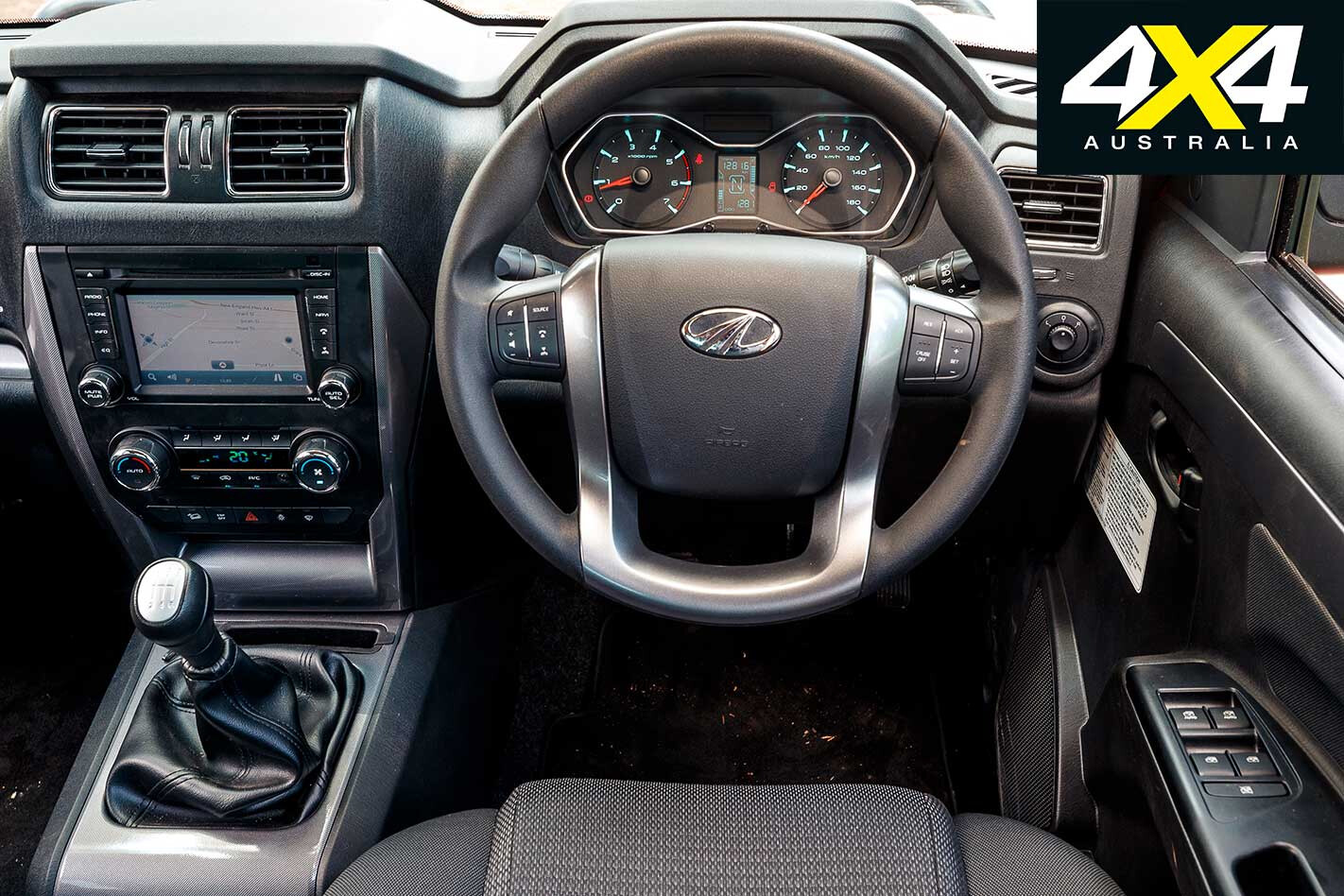
You sit very upright in the Pik-Up’s tall cabin and, while it’s generally comfortable, you sit close to the door, and the door armrest is hard and the steering wheel doesn’t adjust for reach.
On the positive side the driver’s seat has height adjustment and there’s a fold-down centre armrest for the driver and front-seat passenger. The rear seat offers plenty of leg-room for taller passengers, but it’s a bit of a squeeze for three adults width-wise.
Our test Pik-Up was the up-spec S10 model, which runs a six-inch touchscreen, sat-nav, reversing camera, Bluetooth, auto headlights and wipers, DRLs, and climate and cruise control. Unfortunately the display screen is hard to read, the cabin needs more stowage, and there are no intermittent wipers. And, while the interior fit and finish is okay, it could be better.
This new Pik-Up hasn’t undergone ANCAP safety testing, but it has more safety kit since the previous model gained three stars in what was a less stringent test in 2012.
Practicalities
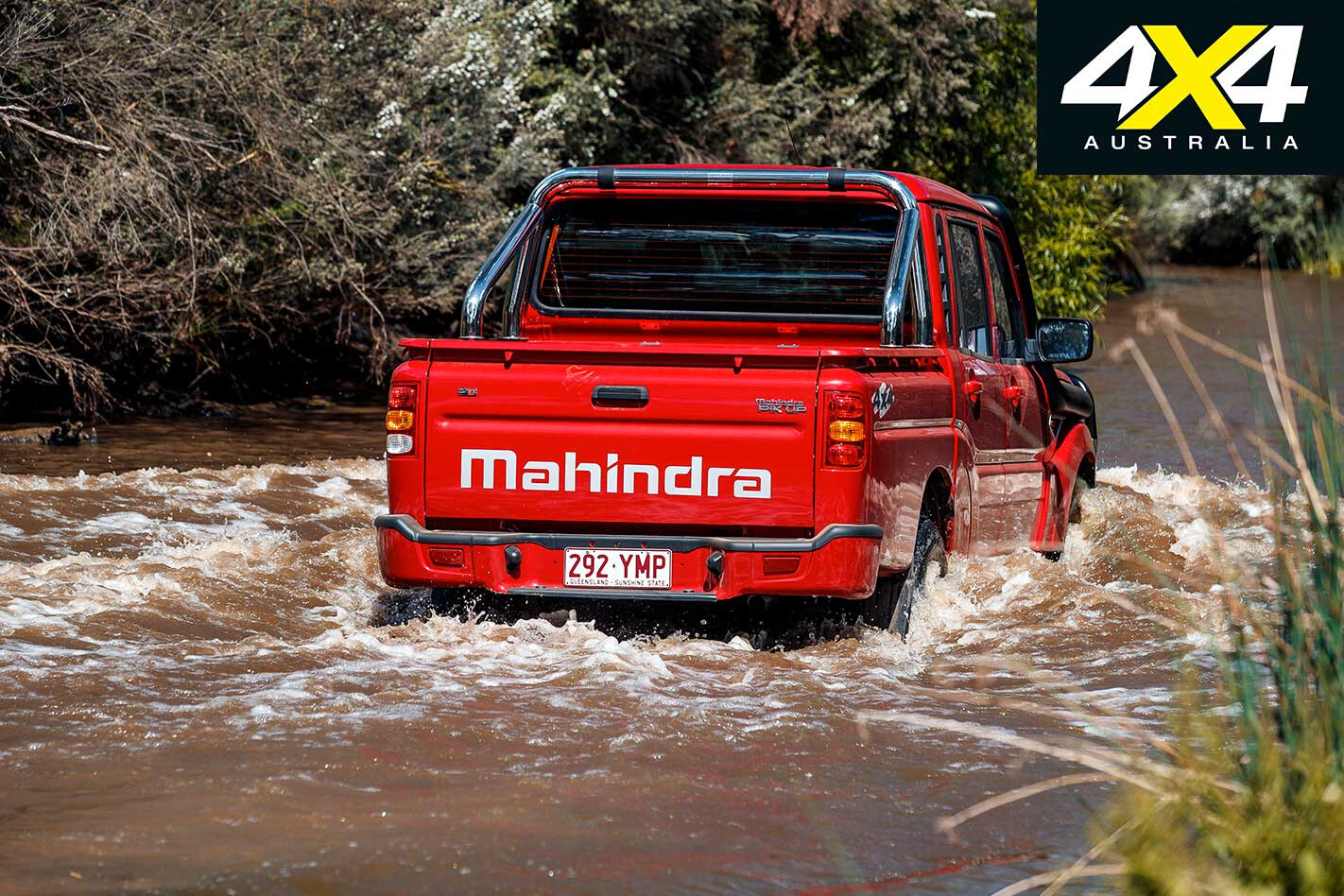
Factory accessories include a winch-compatible steel bullbar (with recovery hooks) and snorkel, accessory trays in place of the factory tub, and a towbar. Nice touches are a manual fuel-pump prime and gas bonnet struts, but it does have a modest tow rating.
Summary
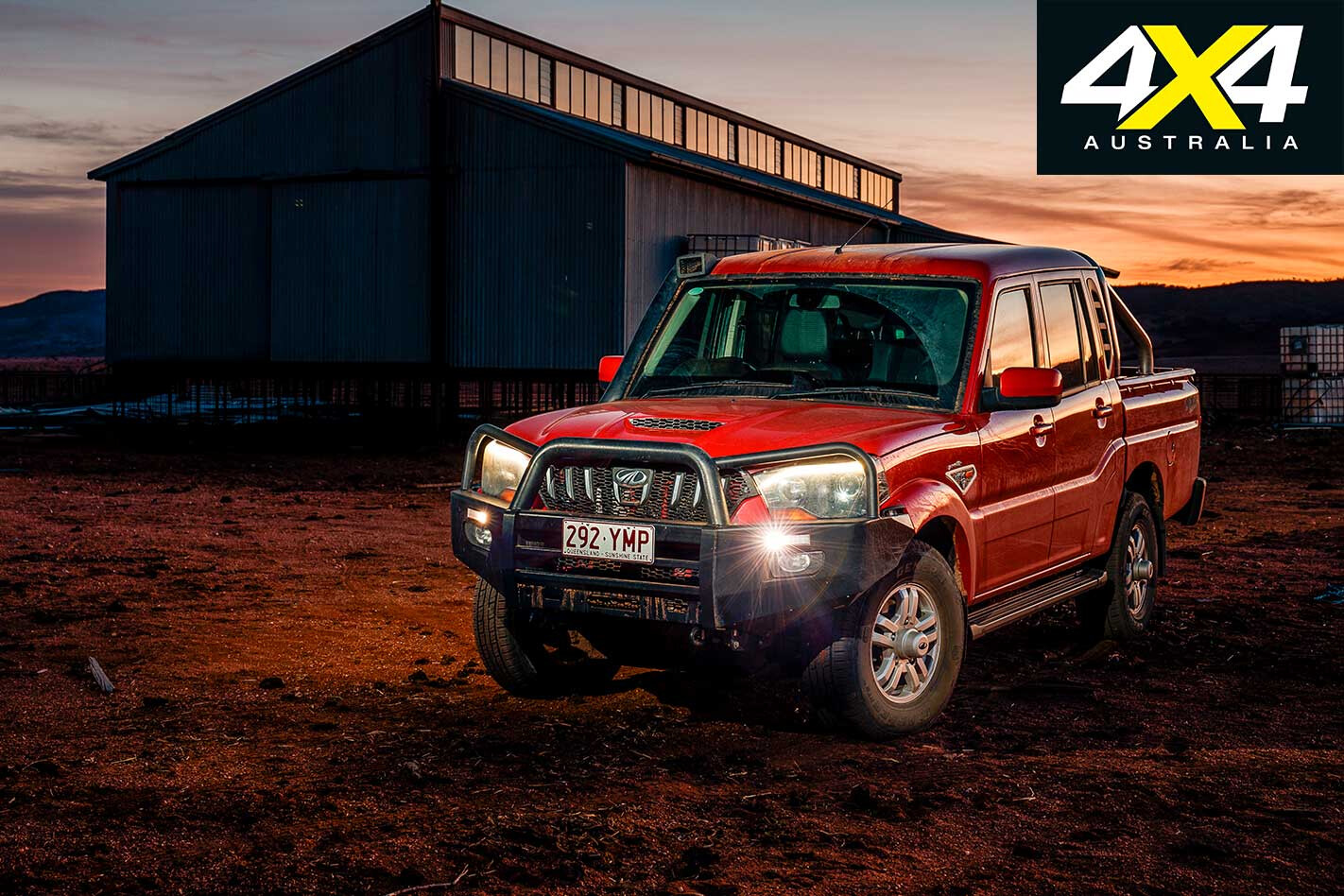
At $31,990 drive-away the Pik-Up is a lot of 4×4 for the money. It did everything we asked of it without fuss and impressed in the way it went about all it did. Without doubt it proved the biggest surprise of the eight vehicles on the test.
2019 MAHINDRA PIK-UP S10 SPECS: Engine: 2.2-litre 4-cyl turbo-diesel Max power: 103kW at 4000rpm Max torque: 330Nm at 1600-2800rpm Transmission: 6-speed manual 4×4 system: Dual-range part-time Kerb weight: 2080kg GVM: 3150kg Payload: 1070kg Towing capacity: 2500kg GCM: 5150kg Tyres: 245/75R16 111S Fuel tank capacity: 80L ADR fuel consumption claim: 8.8L/100km On-test fuel consumption: 10.5L/100km Base price: $31,990 (drive-away) As tested: $35,329 (drive-away)

